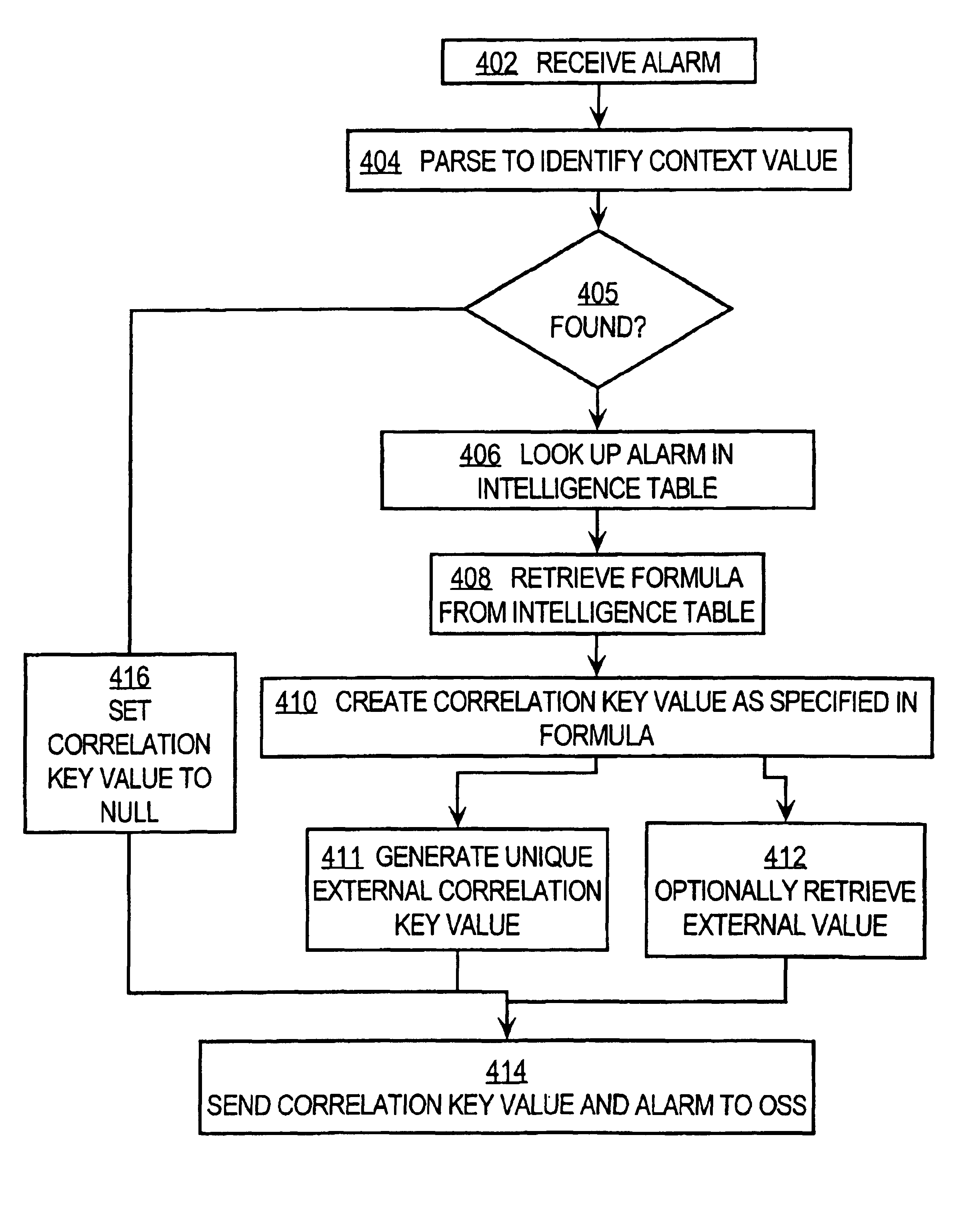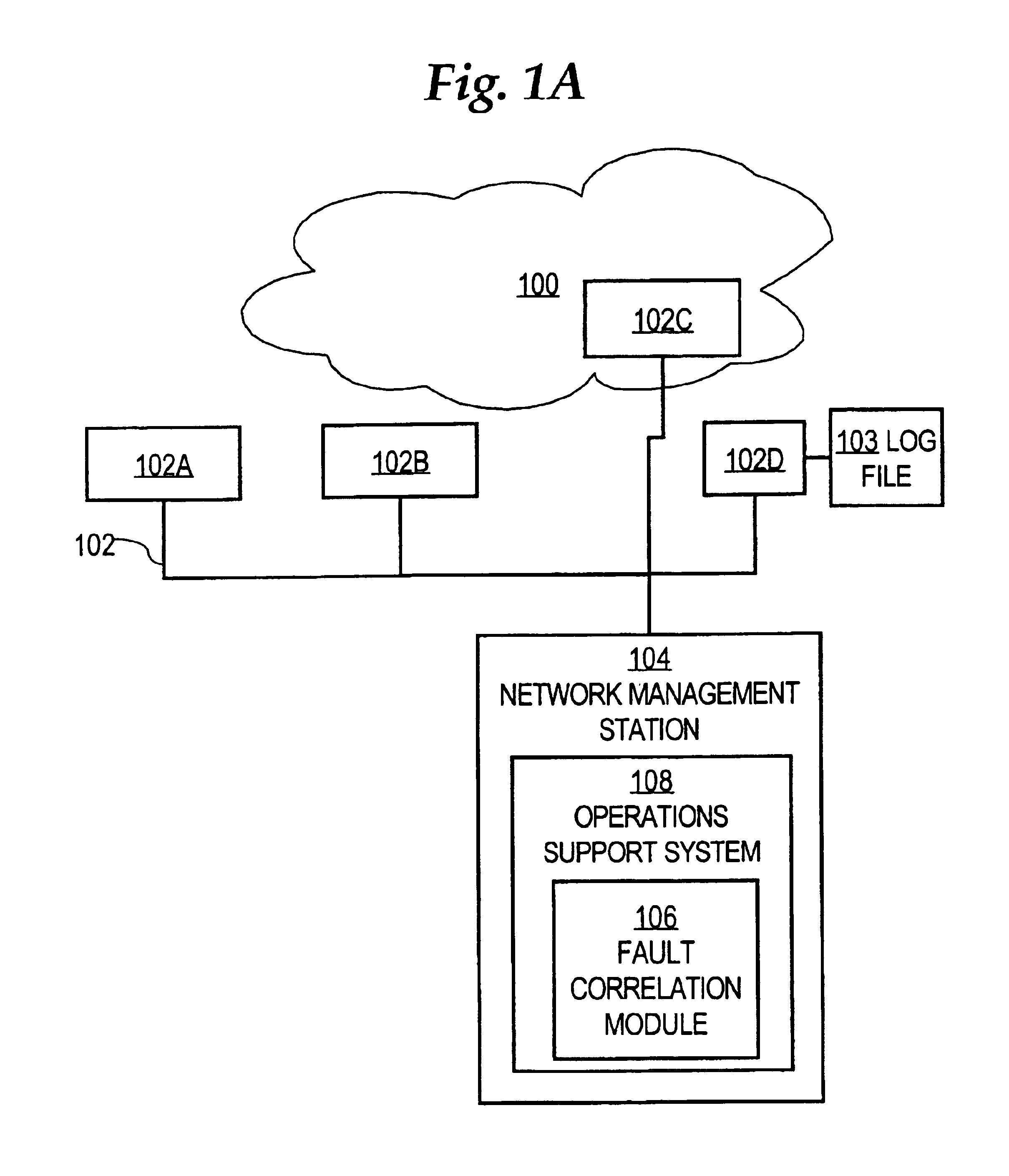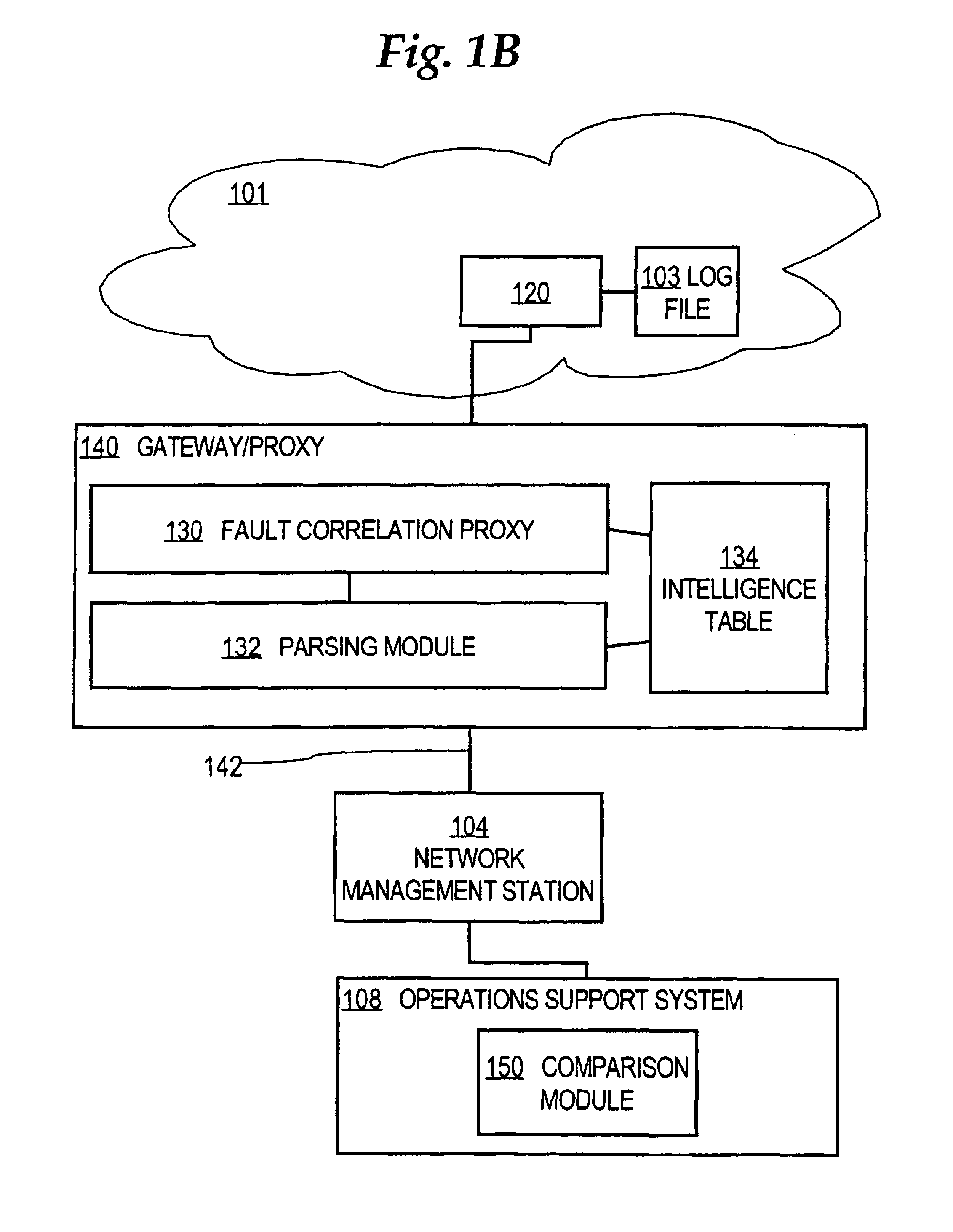Method of labeling alarms to facilitate correlating alarms in a telecommunications network
a technology of telecommunications network and labeling alarms, applied in the field of data processing, can solve the problems of increasing the total cost of maintaining an oss for a network, creating certain management problems, and difficult isolating new alarms, so as to reduce the cost of oss, reduce the potential for erroneous interpretation of alarms, and simplify the effect of processing efficiency of the oss in parsing unique error messages
- Summary
- Abstract
- Description
- Claims
- Application Information
AI Technical Summary
Benefits of technology
Problems solved by technology
Method used
Image
Examples
Embodiment Construction
of limitation, in the figures of the accompanying drawings and in which like reference numerals refer to similar elements and in which:
[0034]FIG. 1A is a block diagram of a network context in which fault correlation is carried out in a conventional approach;
[0035]FIG. 1B is a block diagram of an example network context in which an embodiment may be used;
[0036]FIG. 2 is a block diagram of a network operations support system and its relationship to other logical elements of a network management system;
[0037]FIG. 3 is a block diagram of an intelligence table, in one embodiment;
[0038]FIG. 4 is a flow diagram of a process of generating an alarm correlation value; and
[0039]FIG. 5 is a block diagram that illustrates a computer system upon which an embodiment may be implemented.
DETAILED DESCRIPTION OF THE PREFERRED EMBODIMENT
[0040]A method and apparatus for generating a correlation key value for use in correlating alarms emitted by network elements or system elements in a telecommunications...
PUM
 Login to View More
Login to View More Abstract
Description
Claims
Application Information
 Login to View More
Login to View More - R&D
- Intellectual Property
- Life Sciences
- Materials
- Tech Scout
- Unparalleled Data Quality
- Higher Quality Content
- 60% Fewer Hallucinations
Browse by: Latest US Patents, China's latest patents, Technical Efficacy Thesaurus, Application Domain, Technology Topic, Popular Technical Reports.
© 2025 PatSnap. All rights reserved.Legal|Privacy policy|Modern Slavery Act Transparency Statement|Sitemap|About US| Contact US: help@patsnap.com



